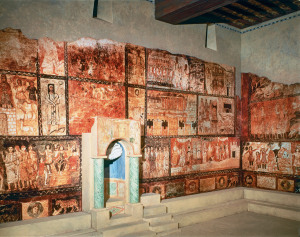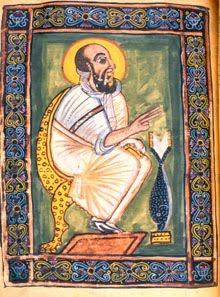- Jan 25, 2009
- 19,765
- 1,428
- Faith
- Oriental Orthodox
- Marital Status
- Private
- Politics
- US-Others
I would not doubt the didactic presence of the pictures what I would be hesitant is to call them "icons" that is what I would have reservations about. Maybe if we see the linguistic approach to the "word" we can find out how they were perceived? I have not done any research and I am not a Judaica expert or an archeologist to know so I have like I said my reservations
.
More than understand the sentiment. Some of it could have indeed been pictures with a didactic presence rather than actual icons...although I'm not for the mindset that would doubt them as being "icons" on some level. Ultimately, as weren't there, we'll never know if the pictures were done simply because they were Hellenized Jews who chose to use pictures/images as the surrounding culture---or if they were done because they truly believed in veneration and the pictures served a greater purpose. I think I'm more open to alot of things in light of being able to study more aspects of Jewish culture over the years--and actually hearing/seeing the testimonies of Jews involved in Jewish culture.
As one said best, known as Byzantine Jewess:
Do you feel that it is inappropriate to have any kind of image of Jesus, whether on a crucifix or a two-dimensional portrait?
As a Jew who attends an Orthodox church (though still davens fairly regularly at shul), Im obviously coming from a different place. I find non-liturgical Protestant worship rather baffling and unappealing, though I dont think its wrong per se. For me, the liturgical life of a Catholic or Orthodox church truly captures something of what I believe must have been the feeling of temple worship.
..... I personally have reached the conclusion that a) kissing an icon is not fundamentally from kissing the Torah scroll when its carried by and b) the Incarnation changed some fundamental dynamics re: our ability to portray God (of course, not in all aspects!)....In my current understanding, having read works such St John of Damascus On Divine Images, I think both the icon and the physical presence of the Torah scroll point to Gods divine revelation and self-disclosure the icon to Gods revelation in the flesh, the Torah to Gods revelation in Scripture
As a Jew who attends an Orthodox church (though still davens fairly regularly at shul), Im obviously coming from a different place. I find non-liturgical Protestant worship rather baffling and unappealing, though I dont think its wrong per se. For me, the liturgical life of a Catholic or Orthodox church truly captures something of what I believe must have been the feeling of temple worship.
..... I personally have reached the conclusion that a) kissing an icon is not fundamentally from kissing the Torah scroll when its carried by and b) the Incarnation changed some fundamental dynamics re: our ability to portray God (of course, not in all aspects!)....In my current understanding, having read works such St John of Damascus On Divine Images, I think both the icon and the physical presence of the Torah scroll point to Gods divine revelation and self-disclosure the icon to Gods revelation in the flesh, the Torah to Gods revelation in Scripture
I agree. As shared before here in #7 , it's rather sad to see the ways that the Western world has hijacked a number of terms and made them mean something they never meant. "Idol" being one of them...as there was actually a discussion I remeber having once with someone where they were adamant that it was sinful to have pictures of the Messiah either in a church--or even in one's home--due to his understanding of "No graven images" ( Exodus 20). My mindset, as well as others, was that there was a context--and if no physical descriptions were to utilized, there'd be a host of theological issues with how much symbolism/imagery was throughout the Torah.Indeed it would make an interesting investigation into the historical Hebrew religion to see to what extend they "venerated" sacred images vesus pagan idols and if there was a clear cut distinction...between the two. That would have tremendous ramifications to the western iconoclastic protestant world indee
.
Upvote
0




